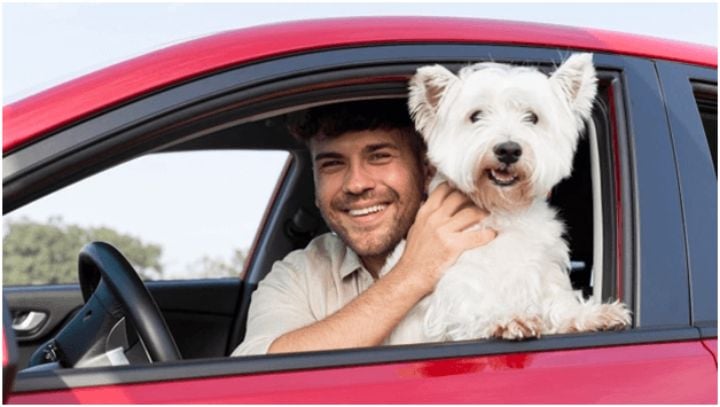
Moving to a new home is stressful, regardless of the situation. There are plenty of tips to know when moving out of state, but when you’re moving long-distance with pets in tow, it’s even more difficult. You must consider their needs and safety, as well as the logistics of getting there. This article will provide helpful tips on how to move long-distance with pets. From preparing ahead of time to transport options, we’ll cover everything you need to know for a successful move.
Visit the Vet
Before any long-distance move, ensuring your pet is healthy and up-to-date on its vaccinations is important. Going to the veterinarian for a checkup before the move will provide peace of mind that your pet is in tip-top shape and ready for the big trip. If your pet takes any medications, be sure to stock up. You should be finished moving long before a prescription runs out, as it’s not always easy to find a new vet and get an appointment.
If your pet takes medication for situational anxiety, make sure you have it ready. Many dogs and cats require calming medications for stressful situations, such as when there are fireworks or a party at the home. Moving long distances is just as stressful and anxiety-inducing for pets as it is for you; being hyper-aware of their well-being and over-preparing for such a move is always recommended.
Your vet is also a great resource with whom to share your plan of action for moving with pets. Regional and geographic considerations—many of which you’ve probably never even heard of—must be factored in for the good of you and your pets. For example, some states have laws that require certain vaccinations for dogs or cats; and if you’re moving to Port Orange, Florida, from a colder climate, your vet may suggest moving up your pet’s summer grooming (no matter the time of year).
Plan Ahead
Make sure you plan out your journey in advance. Research transportation options, decide who will be responsible for looking after your pet during the trip, and make sure to pack an ample supply of food, water, dog or cat diapers and toys. Also, don’t forget to bring along any necessary documents like vet records or vaccination certificates.
Equip the Trip
Depending on how you’re traveling, there are additional precautions to take. If you’re flying, for example, look into airline policies regarding pet transport and book flights accordingly. If you’re driving, check the vehicular laws in your destination state to make sure you’re prepared for any regulations that must be followed.
Driving with your pets is almost always preferable to flying with them, but you should never transport animals in the back of a moving truck or van. If you wouldn’t transport a person in the back of the truck, you shouldn’t transport your pets that way.
When moving with pets, getting them new tags that reflect your new address is also advisable. Doing so before the move makes for one less thing to worry about, and you’ll appreciate the peace of mind when you get to your new home.
Provide Your Pets with Familiarity
Your pet’s safety and comfort should be at the top of your priority list. Make sure they have a comfortable carrier or seatbelt restraint and bring along their favorite blanket or toy to help them feel more secure.
If your pet is used to being in a crate, you can move with them that way—as long as it’s a crate they’re familiar with. Otherwise, pet-safe harnesses attached to a vehicle’s seat belt are the safest way to drive long distances with your pets.
Allocate Extra Time For the Trip & Acclimation
One of the best ways to ensure a smooth long-distance move with pets is to expend as much of their energy as possible before beginning the drive. Aim for an extra hour of playtime and activity in the mornings and a nighttime walk or two.
Allocating extra time for bathroom breaks is a great way to prevent falling behind schedule. Humans and pets will both need to use the facilities, so planning for that will help you stay on schedule.
Once you’ve arrived, allow yourself extra time to get your pet settled in the new home and acclimated to its surroundings. Give them a few days before you start introducing them to other people or animals in the area, as they may need time to adjust. Otherwise, getting your pets back into their normal routine in the new home is the best way to ensure the smoothest acclimation possible.
Man’s Best Travel Buddy
There are many details to consider and prepare for when moving long distances with pets, but following these tips will make the transition easier and smoother. Your pet can be your best long-distance travel buddy with the right research, planning, and care!
We hope you found this blog post on How to Move Long Distance with Pets, useful. Be sure to check out our post on Moving With Pets: Here’s what you need to know! for more great tips!
Have Experience in the Moving Industry? Want an Additional Income Stream? Work With All Around Moving!
Partner with All Around Moving and join the Work With Us program. We’ll help you make money arranging moving services, by establishing your own moving consultant business operation. Read the simple terms by Clicking here to learn more.





